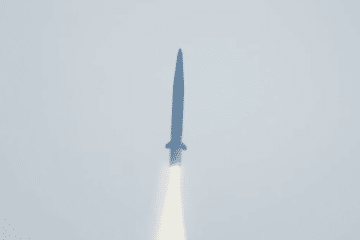The so called “budget for improving defense capabilities” is reportedly around 107.4 trillion KRW (~$86,1 billion), which would take 36 percent of the total defense budget in 2027. Operation costs will reach up to 224 trillion KRW (~$179,7 billion).
Korean Triad System and Kill Chain
The government will prioritize spending a large portion of the budget to acquire the ‘Korean Triad System’, one of which is the ‘Kill Chain’ which enables preemptive strikes in case of any signs of North Korean strikes. For this, the MND would spend to acquire 20 stealth fighters F-35A and KTSSM (Korea Tactical Surface-to-surface Missile).
Also, South Korea will create the Strategic Command in 2024, as a response to North Korea’s nuclear and WMD threats. Especially, Seoul will strengthen its strike capabilities by acquiring SLBM-equipped mid-sized submarines of 3,600 tons, also known as KSS-III Batch-2, and UAVs.
In order to enhance another axis of the Korean Triad System, KAMD (Korea Air and Missile Defense) that detects and intercepts hostile missiles, 8,000 tons Aegis destroyers and ballistic missile early-warning radars will be operated, eventually establishing the Maritime Task Fleet Command with the increased number of ships.
The improved L-SAM with higher altitude defense capabilities will be deployed, and L-SAM will be developed as other variants such as a sea-based interception system. It is likely that this development will contribute to forming more sophisticated multi-layered air defense.
Korea Massive Punishment and Retaliation (KMPR), the last axis of the Korean Triad System, will also be strengthened to increase strike capabilities by acquiring ISR satellites, high-yield ballistic missiles, and weight of conventional warheads for missiles.






